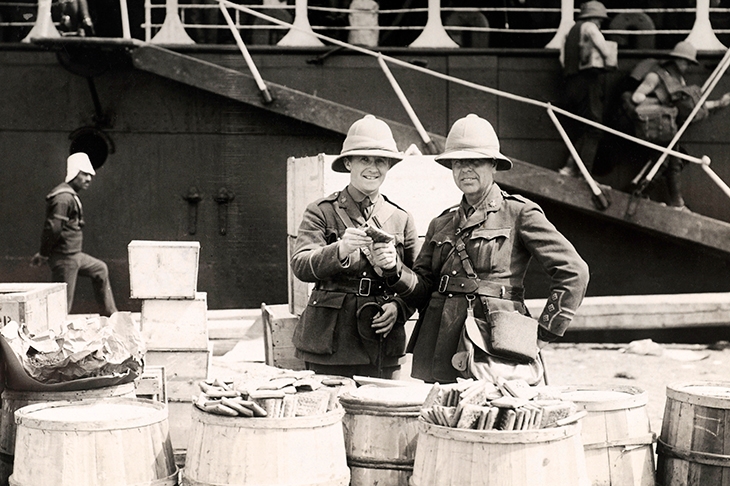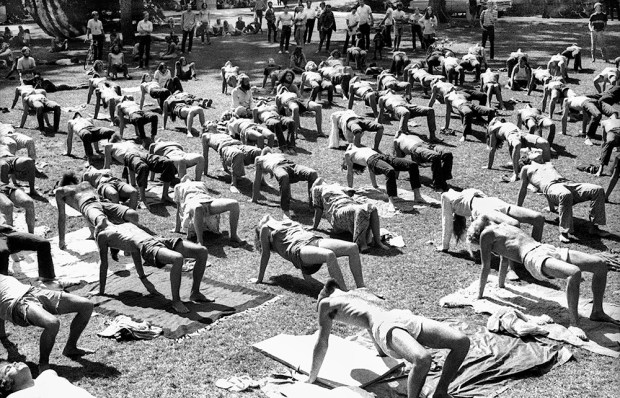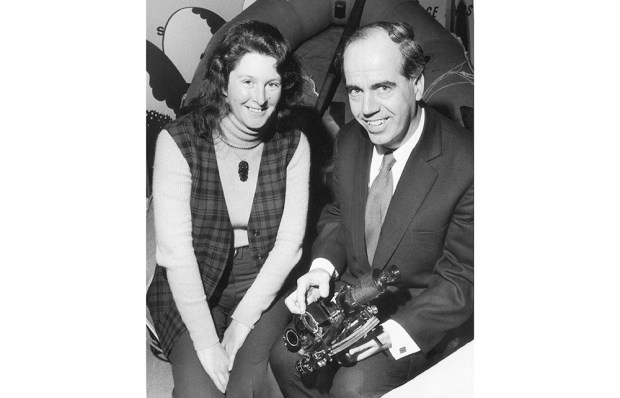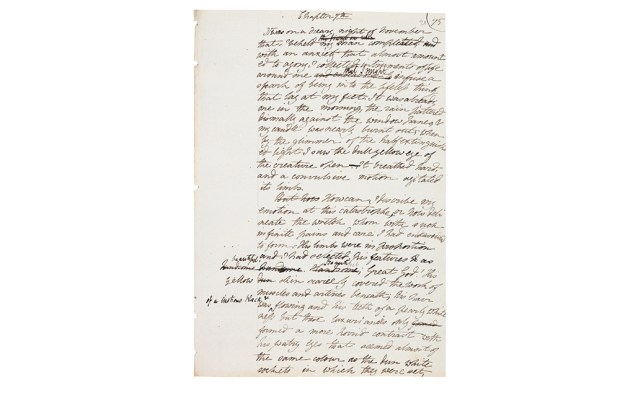Sin-eating is an old European practice. After a person’s death, during the period of lying-in, a biscuit would be placed on the corpse in its coffin. Before the burial, one of the mourners would eat it in order to take on the sins of the departed and allow them to move on into the next life free of the burdens of their transgressions.
Such fascinating info is the stuff of Lizzie Collingham’s book The Biscuit. This review, sadly, won’t touch on a tenth of it.
Collingham has bagged a senior place among writers telling history through a single item of food. The book ranks up there with Salt and Cod by Mark Kurlansky. Her previous such book was Curry: A Tale of Cooks and Conquerors, which I thought would be hard to match, but Collingham has pulled it off again. A former research fellow at Jesus College, Cambridge and history professor at Warwick, she resists the temptation to speculate, exaggerate or invent. What you get is well-researched, detailed information, but written as a clear and interesting story. I hate to think of how much truly boring information about the biscuit she must have ploughed through to hone it down to a fascinating tale of myth, medicine, economics, and survival of armies and navies — and not just of the biscuit, which has been around at least since the third millennium BC, when cooks in Mesopotamia found that drying their bread in the sun meant it didn’t go stale or mouldy. This quickly led to drying by the fire or in the oven, hence bi-cuit (twice-cooked).
The Biscuit isn’t chronological, but jumps around following stories loosely linked by concept. The survival theme takes in hard tack, the sailors’ biscuit, of which the mutineers gave Captain Bligh 150lbs when they set him and 18 men adrift in a longboat in the South Seas. By the time they reached Timor, 4,000 miles to the west, they were down to an ounce of biscuit a day.
Army and navy rations relied heavily on biscuit, and Collingham tells of its role in the Napoleonic wars, and of the dastardly bakers who delivered damp, adulterated sacks of biscuit, which quickly contained more weevils than flour. This eventually led to the industrialisation of the baking process, both by the navy itself and by civilian (mostly Quaker) manufacturers, who boasted of their refined, untouched-by-human-hand products, meant only for the middle classes and aristocracy. Huntley & Palmers, Peek Frean, McVitie’s, Jacob’s, Carr’s and Lang’s all had their heyday in the 19th century.
Once sugar arrived in plentiful supply from the colonies, sweet biscuits and fancy iced biscuits overtook cream crackers and water biscuits. Sugar was promoted as a health-giving food. The baker barons fought ferociously for the custom of the rich, copying each other’s successes and stealing each other’s top staff. It wasn’t until after the first world war that American competition brought the price of biscuits down to a level everyone could afford. Today we eat more biscuits than any other nation, presumably helping to make us the fattest in Europe.
Every country has its biscuit tradition, based on its bread. In northern Europe rye and barley grew better than wheat. This resulted in oatcakes in Scotland, clapbread in Lancashire, cracknel or crispbread in Scandinavia (sometimes with a hole in the middle of the biscuits to string them from the rafters).
Twice-baked biscuit often needs soaking. Collingham quotes Patrick Leigh Fermor who, exploring the wild Kavara region of western Greece whose inhabitants had been ‘famous for living exclusively by mendacity’, encounters a 90-year-old who happily describes how, as a youth, he and his friends would take a tagari, a roomy woven bag, slung on a cord, and fill it with paximadia, a twice-baked bread as hard as stone (once the diet of hermits, and now the sustenance of shepherds) and, thus equipped, would set off to make their living as itinerant quack doctors, relic-pedlars, beggars and pickpockets. There follows a recipe for Dakos Salad, which is basically the rock-hard paximadia left to soften with a covering of chopped tomatoes, feta, oregano and olive oil. Sounds good to me.
Less good is Charles Augustus Abbey’s recipe for scouse. He went to sea, aged 14, on the tea clipper The Surprise:
I have made scouse for the last two days…by breaking up some biscuit and soaking it in water a few minutes and cutting in bits of beef, then put in some slush or grease of any sort… It is better than nothing… however bad it may be.
I didn’t know, and was delighted to learn, that slush was the fat that rises to the top of a vat of boiled salt beef. Ships’ cooks augmented their pay by selling it to tallow-makers when their ship docked — hence ‘slush fund’.
Chowder started as a biscuit-based fishy soup or stew, as was scouse. Joseph Banks describes how chowder, made of biscuit, salt pork and fish, had become by 1766 the pride of Newfoundland, from the poor to ‘society’. Herman Melville devotes a whole chapter of Moby-Dick to chowder.
‘Dunking’ seems to stem from the business of soaking hard biscuit to make it palatable. One of the earliest sweet biscuits was the lady’s finger. It is the perfect shape for dunking into the small glasses of the time. So are the Italian biscotti and the French langue du chat. Dunking may be considered a working-class delight today, but dipping your ‘sippet’ into your cordial or tea was once an elegant way to behave.
Soaking biscuits also led to the famous English trifle. In 1604 Lady Elinor Fettiplace’s cookbook recommends steeping bits of biscuit in wine and covering them with custard. By the 18th century Elizabeth Raffald was using macaroons soaked in sweet white wine topped with custard and a frothy syllabub of cream, the whole decorated with flowers and comfits. Today we’ve replaced the biscuits with stale cake and added (a mistake to my mind) a layer of jelly.
My only complaint about the book is that there is no mention of Aberffraw biscuits, allegedly the first British biscuit, revived in Wales five years ago; nor the oldest biscuit in the world sold at auction, with the effects of a sailor who fought at the battle of Trafalgar. But there, you see, Collingham has got me so hooked on the subject I am probably Googling fake news which she has wisely rejected.
Got something to add? Join the discussion and comment below.
Get 10 issues for just $10
Subscribe to The Spectator Australia today for the next 10 magazine issues, plus full online access, for just $10.
You might disagree with half of it, but you’ll enjoy reading all of it. Try your first month for free, then just $2 a week for the remainder of your first year.














Comments
Don't miss out
Join the conversation with other Spectator Australia readers. Subscribe to leave a comment.
SUBSCRIBEAlready a subscriber? Log in